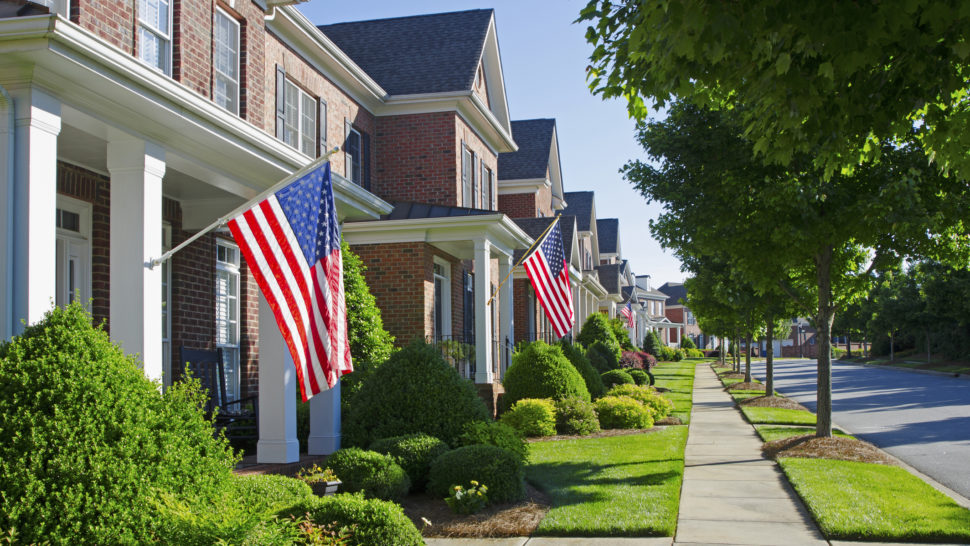Know the Rules Regarding Raising the Flag and Flagpoles


Homeowners associations and condominium communities are in the best position to determine the appropriate size, placement and installation of flags and flagpoles in their communities. That’s why CAI applauded the 2006 enactment of federal legislation giving residents the right to fly an American flag as long as they do so in compliance with association rules with respect to size, placement and installation.
Most homeowners associations do have rules and restrictions about displaying flags, but not just the American flag. These rules also apply to flags and banners of any kind—other national flags and those depicting holidays, seasons, universities, sports teams and so on. While the U.S. flag has profound meaning for many Americans, flag display rules are conceived and enforced to promote aesthetic uniformity and avoid the potential proliferation of all flags, banners, and emblems. On a practical level, homeowners associations rules also protect common elements like exterior siding and assets like warranties, such as those covering roofs.

Freestanding, permanent flagpoles are often the source of controversy—not the flag itself. While they may be appropriate in some neighborhoods, permanent flagpoles are not appropriate for all homeowners associations. Individual communities should decide if poles can be erected and establish reasonable height and placement guidelines. A 40-foot pole in front of a two-story townhouse with a small front yard doesn’t make sense, whereas a home with a large lot may be suitable for a flagpole in an appropriate location.
It is important to remember that homeowners have a contractual obligation to comply with certain rules and regulations when they move into an association-governed community. These apply not just to flags, but also to outside antennas, satellite dishes, clotheslines, fences and patios, to name only a few. However, rules are not set in concrete. We encourage homeowners associations to review their governing documents periodically to ensure they are reasonable and truly reflect the will of the community. A rule that may have made perfect sense 20 years ago may not be appropriate or desired today. Each community should determine what’s right for that community, and only after an open and constructive dialogue involving the residents of that community.
HOAresources.com explores questions and comments from community association members living in condominiums, homeowners associations, and housing cooperatives. We then assemble trusted experts to provide practical solutions to your most commonly asked, timely questions. We never use real names, but we always tackle real issues. Have a question or comment about your community association? Submit here for consideration:
Join CAI’s online community for access to the industry’s most in-demand community association resources.
Thousands of your peers are sharing advice.
Dawn Bauman, Chief Strategy Officer. As CAI’s lead advocate for federal and state legislative and regulatory affairs, Dawn works with volunteer leaders throughout the country serving on CAI legislative action and government affairs committees to advocate for strong and sensible public policy for America’s community associations.